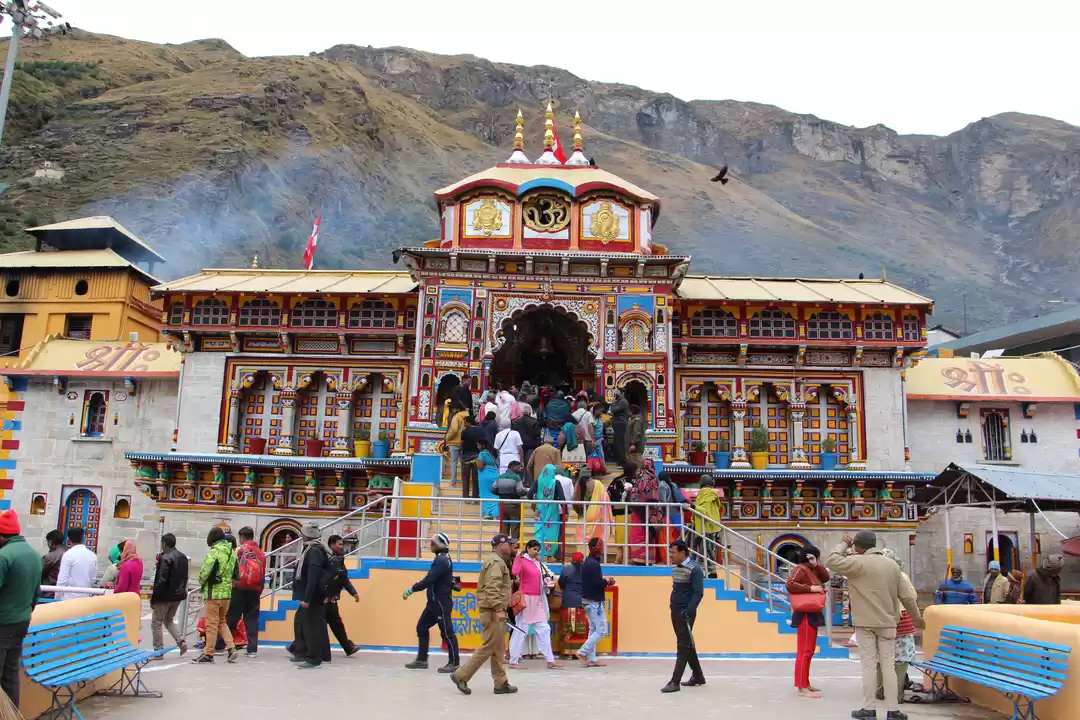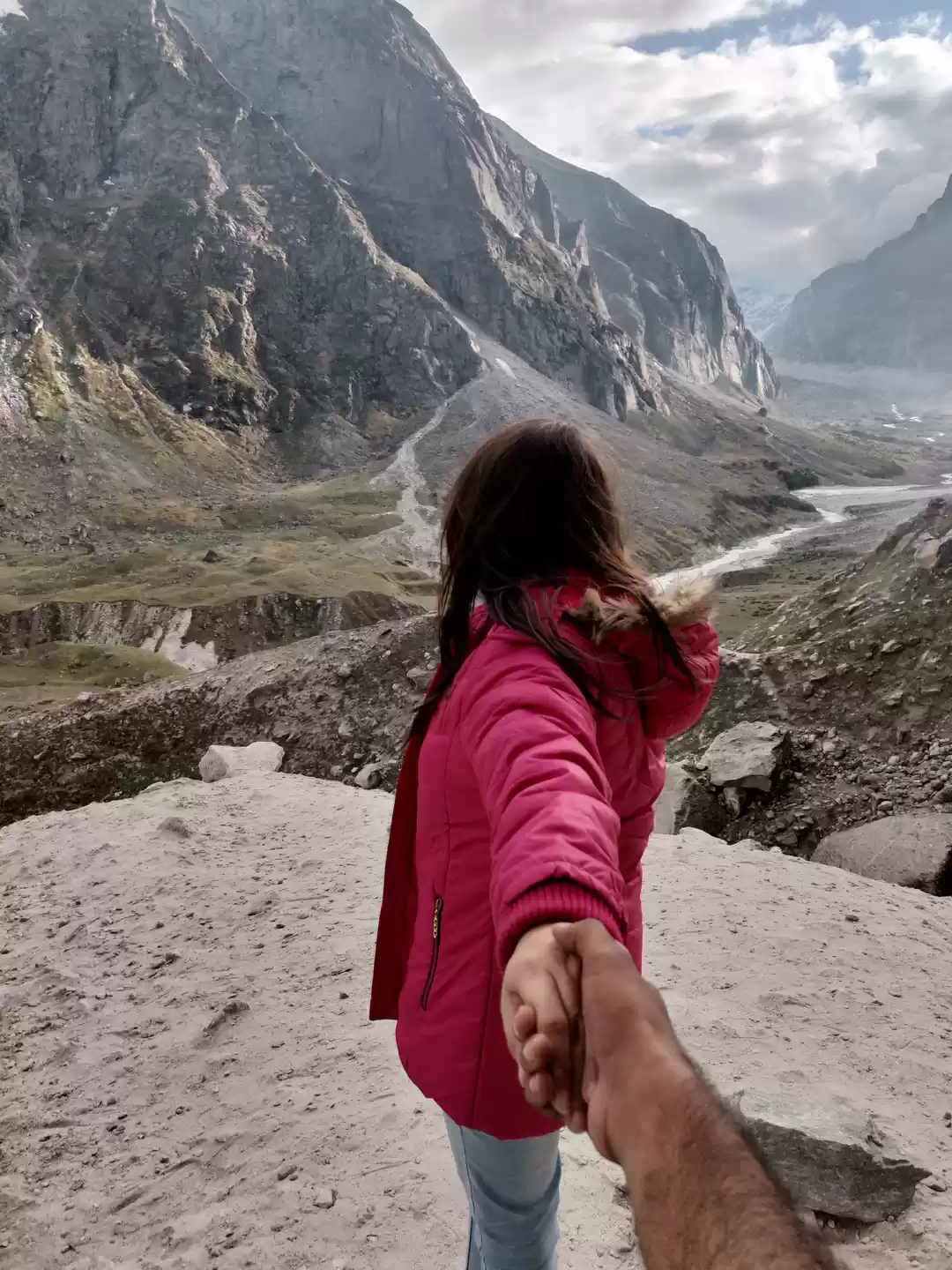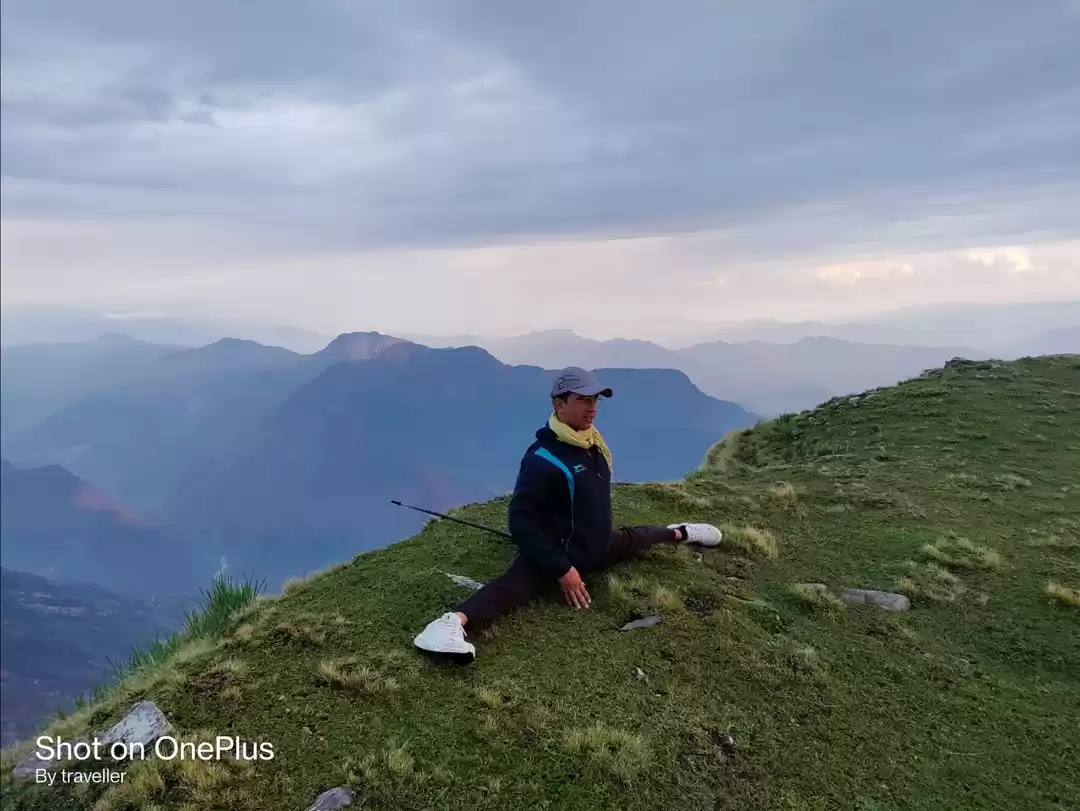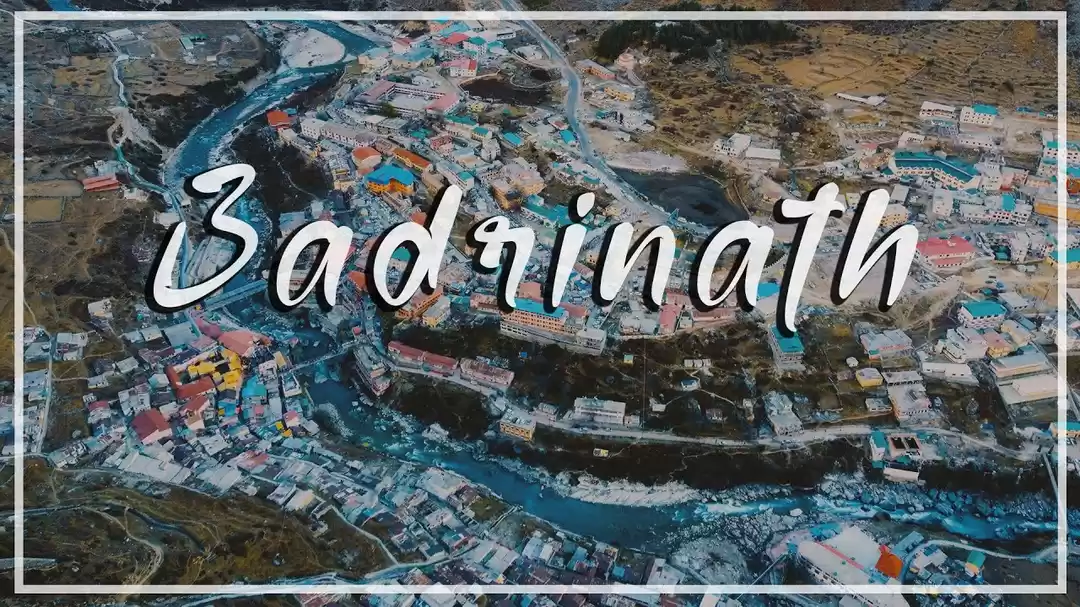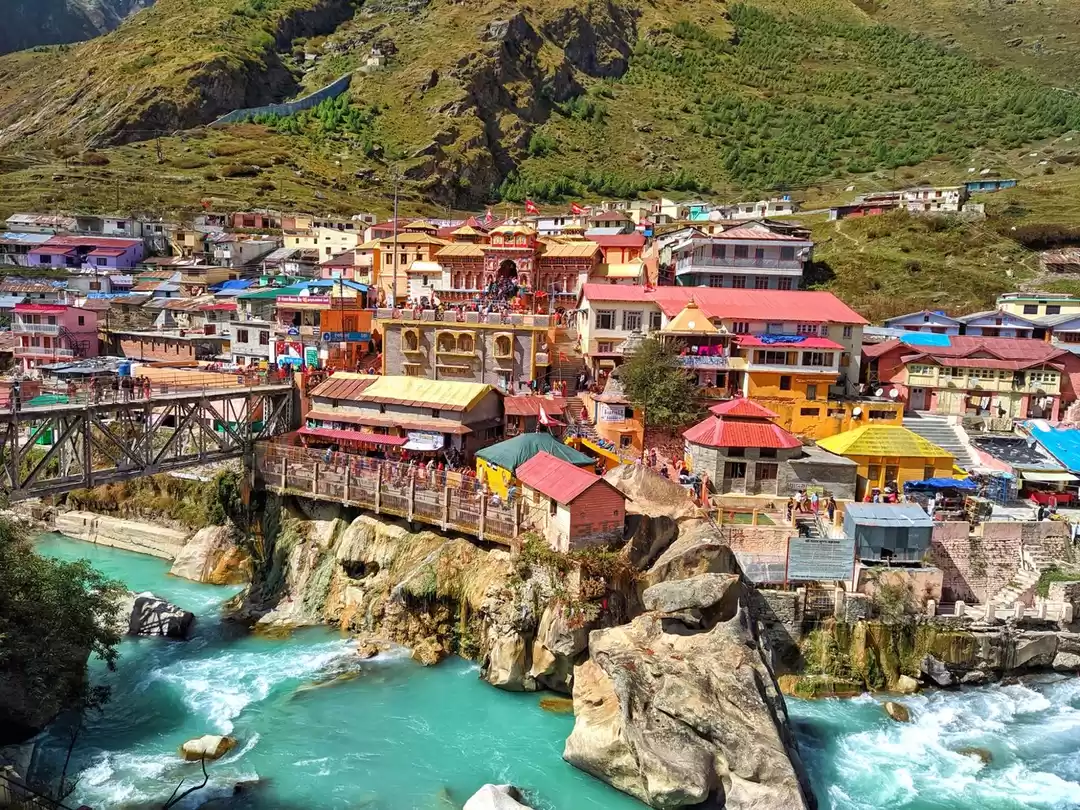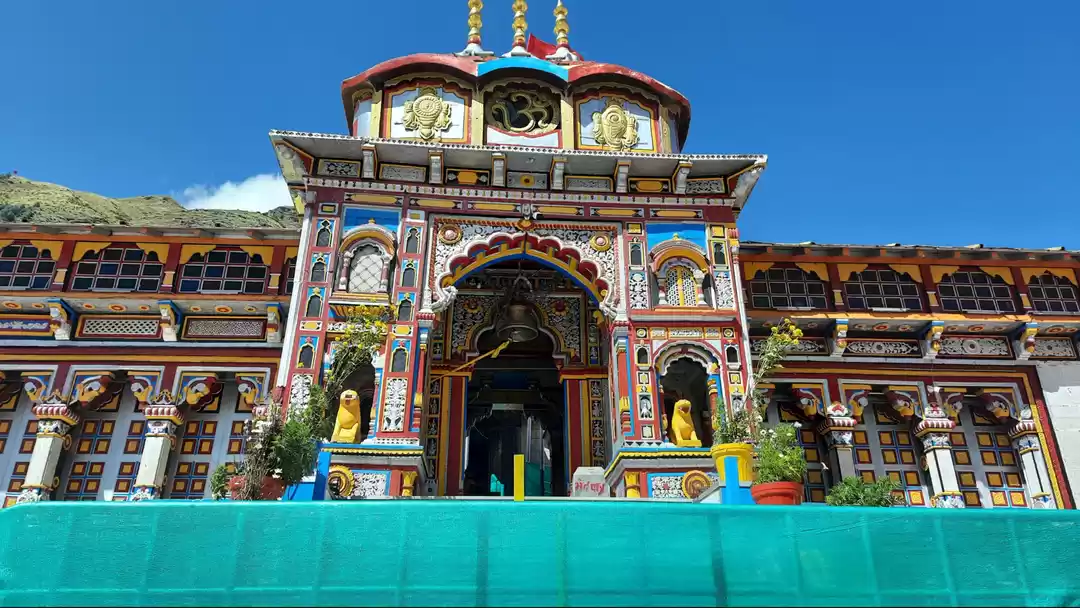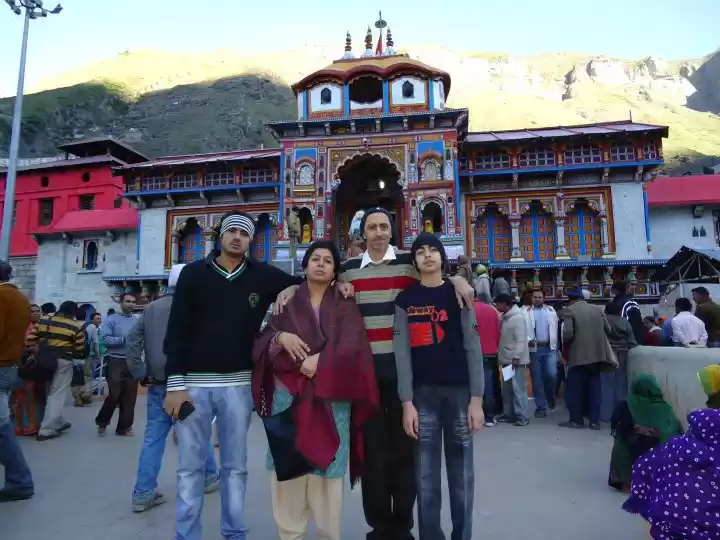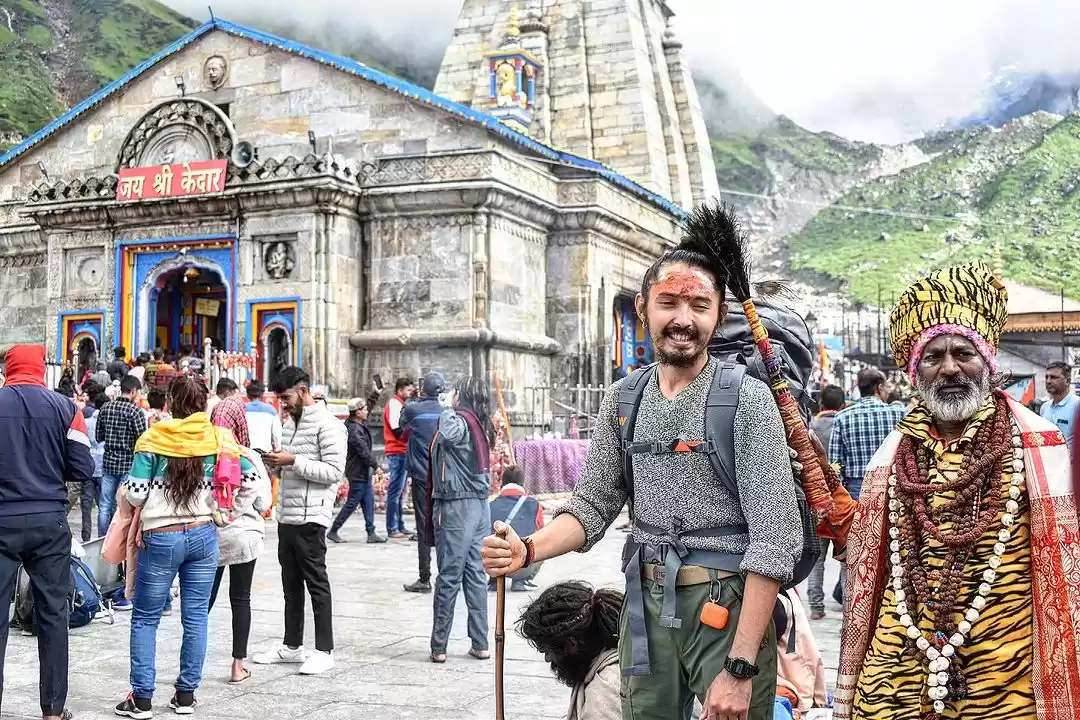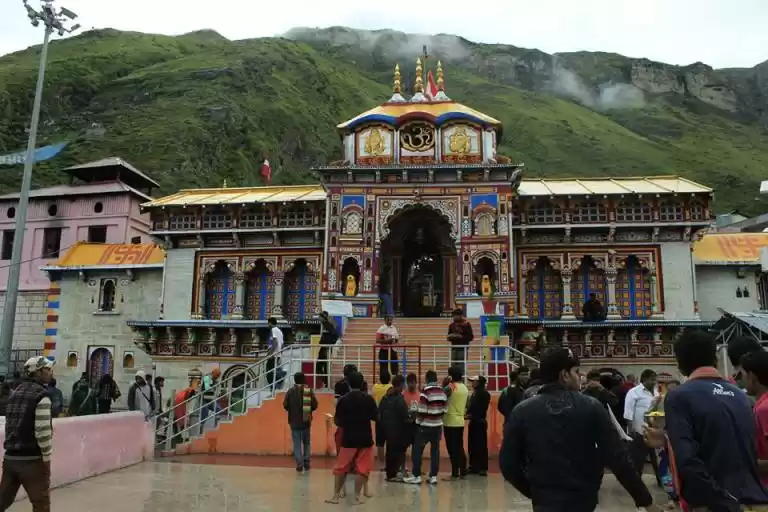Have you ever wondered what it would be like to visit a place where the gods reside? A place where the natural beauty and the spiritual aura create a heavenly atmosphere? A place where you can experience the bliss of being close to the supreme power?
If yes, then you should definitely plan a trip to Badrinath Temple, one of the four sacred pilgrimage sites in India. Located in the Chamoli district of Uttarakhand, Badrinath Temple is dedicated to Lord Vishnu, the preserver and protector of the universe. It is also part of the Char Dham Yatra, a holy circuit that includes four temples in four different corners of India.
Badrinath Temple is not just a place of worship, but also a place of history, culture, and adventure. It has a rich and fascinating legend behind its origin and existence. It has a stunning and unique architecture that reflects the ancient and medieval styles. It has a variety of attractions and activities that cater to different interests and preferences.
In this article, we will tell you everything you need to know about Badrinath Temple, from its opening and closing dates to its pooja rates, from its location and architecture to its places to visit, from its best time to visit to its travel tips. We will also share some interesting facts and stories that will make your visit more memorable and meaningful.
So, without further ado, let us begin our journey to the divine abode of Lord Vishnu in the Himalayas.
Badrinath Temple Opening and Closing Dates 2023
One of the first things you need to know before visiting Badrinath Temple is its opening and closing dates. The temple remains open for only six months in a year, from April or May to October or November. The exact dates are decided by the priests based on the Hindu calendar and astrological calculations.
The temple opens on the auspicious day of Akshaya Tritiya, which falls in late April or early May. The temple closes on the auspicious day of Vijaya Dashami, which falls in late October or early November. The temple gates are closed after a grand ceremony that involves offering prayers and flowers to Lord Vishnu.
Here is a table that shows the opening and closing dates of Badrinath Temple for the year 2023:
Opening Date Closing Date
28 April 2023 30 October 2023
You can check the official website of Badrinath Temple for any updates or changes in these dates.
How to Reach Badrinath Temple
The next thing you need to know before visiting Badrinath Temple is how to reach there. The temple is located at an altitude of 3,133 meters above sea level, surrounded by snow-capped mountains and lush green valleys. The nearest town is Joshimath, which is about 45 kilometers away from the temple.
There are three ways to reach Badrinath Temple: by road, by rail, and by air.
By Road
The most common and convenient way to reach Badrinath Temple is by road. There are regular buses and taxis available from major cities like Delhi, Haridwar, Rishikesh, Dehradun, etc. The road journey takes about 10 to 12 hours from Haridwar or Rishikesh, depending on the traffic and weather conditions.
The road route passes through some scenic places like Devprayag, Rudraprayag, Karnaprayag, Nandaprayag, Chamoli, Joshimath, etc. You can also stop at these places to enjoy the views or visit some temples or attractions.
However, you should also be aware of some challenges and risks involved in traveling by road. The roads are narrow, steep, and curvy, especially in the mountainous regions. The roads are also prone to landslides, floods, or snowfall during monsoon or winter seasons. Therefore, you should always check the road conditions before planning your trip.
By Rail
The second way to reach Badrinath Temple is by rail. The nearest railway station is Rishikesh, which is about 295 kilometers away from the temple. Rishikesh is well-connected by trains from major cities like Delhi, Mumbai, Kolkata, etc. The train journey takes about 6 to 8 hours from Delhi.
From Rishikesh, you can take a bus or a taxi to reach Badrinath Temple. The road journey takes about 10 to 12 hours from Rishikesh, depending on the traffic and weather conditions.
However, you should also be aware of some challenges and risks involved in traveling by rail. The trains are often crowded, delayed, or canceled, especially during peak seasons or festivals. The trains are also not very comfortable or hygienic, especially for long journeys. Therefore, you should always book your tickets in advance and carry your own food and water.
By Air
The third way to reach Badrinath Temple is by air. The nearest airport is Dehradun, which is about 320 kilometers away from the temple. Dehradun is well-connected by flights from major cities like Delhi, Mumbai, Bangalore, etc. The flight journey takes about 1 hour from Delhi.
From Dehradun, you can take a bus or a taxi to reach Badrinath Temple. The road journey takes about 11 to 13 hours from Dehradun, depending on the traffic and weather conditions.
However, you should also be aware of some challenges and risks involved in traveling by air. The flights are often expensive, limited, or canceled, especially during peak seasons or bad weather. The flights are also not very reliable or safe, especially for landing or taking off in the mountainous regions. Therefore, you should always check the flight status and availability before booking your tickets.
Alternatively, you can also opt for a helicopter service to reach Badrinath Temple. There are some private operators that offer helicopter services from Dehradun, Haridwar, Rishikesh, etc. The helicopter journey takes about 1 hour from Dehradun or Haridwar.
However, you should also be aware of some challenges and risks involved in traveling by helicopter. The helicopter services are very expensive, limited, or canceled, especially during peak seasons or bad weather. The helicopter services are also not very reliable or safe, especially for landing or taking off in the mountainous regions. Therefore, you should always check the helicopter status and availability before booking your tickets.
Best Time to Visit Badrinath Temple
The next thing you need to know before visiting Badrinath Temple is the best time to visit there. The temple remains open for only six months in a year, from April or May to October or November. The best time to visit Badrinath Temple is during these months, when the weather is pleasant and the views are clear.

However, you should also consider some factors such as temperature, rainfall, snowfall, and festivals while choosing the best time to visit Badrinath Temple.
Temperature
The temperature in Badrinath varies according to the seasons. The summer season lasts from April to June, when the temperature ranges from 15°C to 30°C. The summer season is ideal for sightseeing and trekking in and around Badrinath Temple.
The monsoon season lasts from July to September, when the temperature ranges from 10°C to 25°C. The monsoon season is not recommended for visiting Badrinath Temple, as the rains cause landslides and roadblocks in the region.
The winter season lasts from October to March, when the temperature ranges from -5°C to 15°C. The winter season is also not recommended for visiting Badrinath Temple, as the snowfall covers the temple and makes it inaccessible.
Rainfall
The rainfall in Badrinath varies according to the seasons. The summer season receives moderate rainfall of about 100 mm per month. The summer season is ideal for sightseeing and trekking in and around Badrinath Temple.
The monsoon season receives heavy rainfall of about 300 mm per month. The monsoon season is not recommended for visiting Badrinath Temple, as the rains cause landslides and roadblocks in the region.
The winter season receives low rainfall of about 50 mm per month. The winter season is also not recommended for visiting Badrinath Temple, as the snowfall covers the temple and makes it inaccessible.
Snowfall
The snowfall in Badrinath varies according to the seasons. The summer season receives no snowfall in Badrinath. The summer season is ideal for sightseeing and trekking in and around Badrinath Temple.
The monsoon season receives occasional snowfall in Badrinath. The monsoon season is not recommended for visiting Badrinath Temple, as the snowfall makes the roads slippery and dangerous.
The winter season receives regular snowfall in Badrinath. The winter season is also not recommended for visiting Badrinath Temple, as the snowfall covers the temple and makes it inaccessible.
Festivals
The festivals in Badrinath vary according to the Hindu calendar and astrological calculations. Some of the major festivals that take place in and around Badrinath Temple are:

Kedar-Badri Utsav:
This festival is celebrated in June or July every year. It marks the opening of Kedarnath Temple, another sacred pilgrimage site in Uttarakhand. The idols of Lord Shiva and Lord Vishnu are brought from Kedarnath and Badrinath temples respectively to a common place in Joshimath. The festival lasts for eight days and involves cultural programs, religious ceremonies, and processions.
Mata Murti Ka Mela:
This festival is celebrated in September every year. It commemorates the mother of Lord Vishnu, Mata Murti, who is believed to have performed penance on the banks of the Alaknanda river near Badrinath Temple. The festival attracts thousands of devotees who come to seek blessings from Mata Murti and offer prayers to Lord Vishnu.
Janmashtami:
This festival is celebrated in August or September every year. It celebrates the birth anniversary of Lord Krishna, an incarnation of Lord Vishnu. The festival is marked by fasting, singing, dancing, and decorating the temple with flowers and lights. A special pooja is performed at midnight, when Lord Krishna is believed to have been born.
Vasant Panchami:
This festival is celebrated in January or February every year. It welcomes the arrival of spring season and honors Goddess Saraswati, the goddess of learning and arts. The festival is marked by wearing yellow clothes, offering yellow flowers, and flying kites. A special pooja is performed at Badrinath Temple to seek wisdom and knowledge from Goddess Saraswati.
These are some of the festivals that you can witness and participate in during your visit to Badrinath Temple. They will add more color and joy to your experience and make you feel closer to the divine.
This Ultimate Guide To Badrinath Temple Is All You'd Ever Need To Plan Your Next Trip!
Places to Visit in and Around Badrinath Temple
The next thing you need to know before visiting Badrinath Temple is the places to visit in and around it. Badrinath Temple is not only a place of worship, but also a place of exploration and adventure. There are many places that you can visit in and around Badrinath Temple that will enrich your knowledge, enhance your beauty, and elevate your spirit.

Here are some of the places that you should not miss during your visit to Badrinath Temple:
Tapt Kund
Tapt Kund is a natural hot water spring that is located just below the temple. It is believed that the water of Tapt Kund has medicinal and healing properties. It is also believed that bathing in Tapt Kund cleanses one’s sins and prepares one for darshan (viewing) of Lord Vishnu. The water temperature of Tapt Kund remains around 45°C throughout the year.
Brahma Kapal
Brahma Kapal is a flat platform on the bank of the Alaknanda river near the temple. It is believed that Lord Brahma, the creator of the universe, resides here. It is also believed that performing shraddha (ritual for deceased ancestors) here liberates their souls from the cycle of birth and death. Many pilgrims come here to perform this ritual and pay homage to their ancestors.

Neelkanth Peak
Neelkanth Peak is a snow-covered mountain peak that stands behind the temple. It is also known as the Garhwal Queen or the Sapphire of Garhwal because of its beauty and majesty. It is named after Lord Shiva, who is also known as Neelkanth (the blue-throated one). The peak offers a spectacular view of the sunrise and sunset, as well as the surrounding valleys and glaciers.
Vasudhara Falls
Vasudhara Falls is a waterfall that is located about 9 kilometers away from the temple. It is accessible by a trekking route that passes through some villages, forests, and meadows. The waterfall falls from a height of about 400 feet into a pool below. It is believed that the water of Vasudhara Falls purifies one’s mind and body. It is also believed that the waterfall changes its direction or stops flowing for those who are not pure at heart.

Valley of Flowers
Valley of Flowers is a national park that is located about 18 kilometers away from the temple. It is a UNESCO World Heritage Site that boasts of a rich variety of flora and fauna. The park covers an area of about 87 square kilometers and has more than 600 species of flowers, plants, trees, shrubs, herbs, etc. The park also has some rare and endangered animals such as snow leopard, musk deer, red fox, etc.
The park remains open from June to October every year. The best time to visit the park is from July to August, when most of the flowers are in full bloom.
Badrinath Temple Pooja Rates
The next thing you need to know before visiting Badrinath Temple is the pooja rates. Pooja is a ritual that involves offering prayers, flowers, fruits, sweets, etc. to the deity. There are various types of poojas that are performed at Badrinath Temple for different purposes and benefits.
Here is a table that shows the pooja rates at Badrinath Temple for the year 2023:
Pooja Name Pooja Description Pooja Rate
Vishnu Sahasranamam Recitation of 1000 names of Lord Vishnu Rs. 500
Abhishekam Bathing of the idol of Lord Vishnu with milk, honey, ghee, etc. Rs. 4500
Ashtottara Shatanamavali Recitation of 108 names of Lord Vishnu Rs. 300
Geeta Path Recitation of Bhagavad Gita, the holy scripture of Hinduism Rs. 1500
Akhand Jyoti Lighting of a lamp that burns continuously for a year Rs. 2500
You can book these poojas online or offline at the temple premises. You can also participate in these poojas and receive the blessings of Lord Vishnu.
Legend Behind the Badrinath Temple
The next thing you need to know before visiting Badrinath Temple is the legend behind it. Badrinath Temple has a rich and fascinating legend that explains its origin and existence. There are two main versions of this legend, one from the Hindu scriptures and one from the local folklore.

Hindu Scriptures Version
According to the Hindu scriptures, Badrinath Temple was established by Adi Shankaracharya, a great philosopher and reformer who lived in the 8th century CE. He is credited with reviving and spreading the teachings of Hinduism across India.
Adi Shankaracharya was on a pilgrimage to the Himalayas when he came across a place where he saw a badri tree (Indian jujube) and a nara tree (wild rose) growing together. He was intrigued by this sight and decided to meditate under the trees.
As he meditated, he had a vision of Lord Vishnu sitting on a lotus flower in the Alaknanda river. He realized that this was a sacred spot where Lord Vishnu had performed penance for thousands of years. He also realized that Lord Vishnu had taken the form of the badri tree and his consort Goddess Lakshmi had taken the form of the nara tree to protect him from the harsh weather.
Adi Shankaracharya was overjoyed by this revelation and decided to build a temple at this spot to honor Lord Vishnu. He also installed an idol of Lord Vishnu made of shaligram (a black stone) in the temple. He named the temple Badrinath, which means the lord of badri.

Local Folklore Version
According to the local folklore, Badrinath Temple was established by Nar and Narayan, two brothers who were incarnations of Lord Vishnu. They were born to Dharma, the god of righteousness, and Murti, the daughter of Daksha, a powerful king.
Nar and Narayan were devoted to Lord Vishnu and wanted to attain his grace. They decided to perform penance in the Himalayas for this purpose. They chose a place where they saw a badri tree and a nara tree growing together.
As they performed penance, they attracted the attention of Indra, the king of gods, who became jealous and fearful of their power. He decided to disrupt their penance by sending various distractions and temptations such as beautiful women, celestial music, delicious food, etc.
However, Nar and Narayan remained unaffected by these distractions and continued their penance with utmost concentration and devotion. They even used their divine powers to create more badri trees and nara trees around them to shield themselves from Indra’s attacks.
Indra realized that he could not succeed in his mission and decided to surrender to Nar and Narayan. He apologized for his actions and praised their determination and devotion. He also requested them to grant him a boon.
Nar and Narayan were pleased with Indra’s repentance and forgiveness. They granted him a boon that he would remain the king of gods as long as he followed dharma (righteousness). They also asked him to spread their glory among the people and encourage them to visit their place of penance.
Indra agreed to their request and returned to his abode. He also instructed his architect Vishwakarma to build a temple at their place of penance to honor them. He also installed an idol of Lord Vishnu made of shaligram in the temple. He named the temple Badrinath, which means the lord of badri. These are the two versions of the legend behind Badrinath Temple.
You can choose to believe either one or both of them, depending on your faith and preference. However, both of them convey the same message that Badrinath Temple is a place of immense spiritual significance and power.
Also Check Out This Complete Guide To Kedarnath and Badrinath Yatra For A Spiritual Fix!
Badrinath Temple is a place where you can witness the glory of Lord Vishnu and the beauty of nature. It is a place where you can learn about the ancient and medieval culture and architecture. It is a place where you can experience the joy of festivals and the peace of meditation. It is a place where you can fulfill your spiritual and adventurous desires.
If you are looking for a destination that offers you all these and more, then you should definitely visit Badrinath Temple. It will be a trip that you will cherish and remember for a lifetime.
So, what are you waiting for? Book your tickets now and get ready to explore the divine abode of Lord Vishnu in the Himalayas.





















